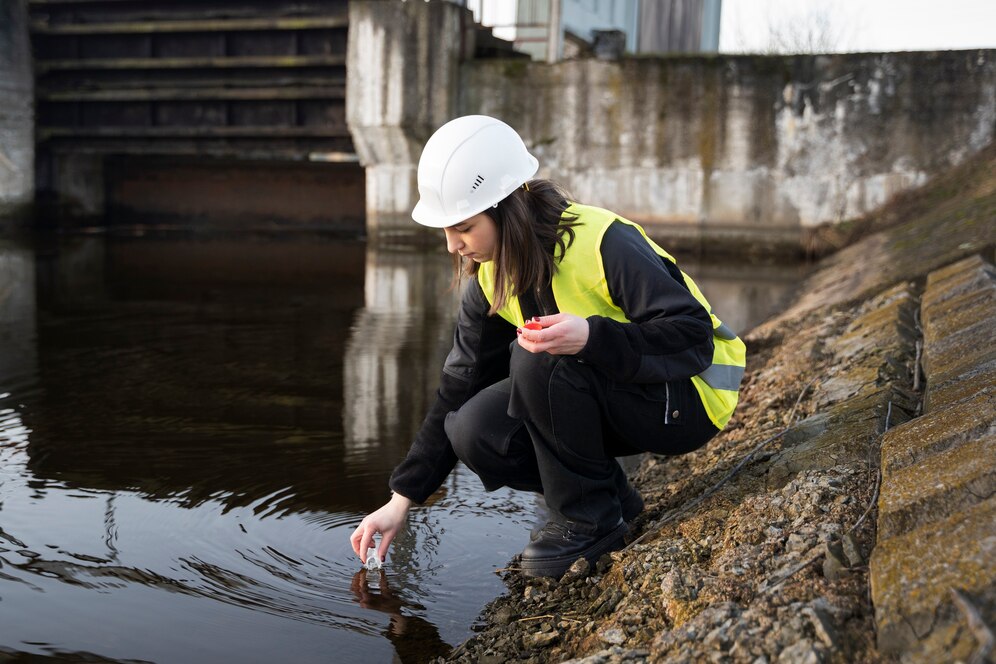Introduction to Pipeline Leak Detection
Underground pipelines are crucial in efficiently distributing water, oil, gas, and other critical resources. Ensuring the integrity of these pipelines is essential, not only for operational efficiency but also for safety and environmental protection. Detecting leaks early is integral to infrastructure maintenance, as it helps prevent potentially costly and dangerous consequences. This tool is instrumental in identifying elusive leaks that could go unnoticed for extended periods.
Accurate leak detection is imperative. Early detection facilitates prompt repair, preventing minor issues from escalating into major problems. This conserves resources and curtails the financial burden of extensive maintenance and environmental restoration. Combining traditional methods and modern technologies ensures utilities can maintain optimal service levels while safeguarding the environment.
Common Causes of Pipeline Leaks
Pipeline systems are susceptible to various stressors that can lead to leaks. Corrosion is one of the most common culprits, occurring when pipelines are subjected to prolonged exposure to moisture and corrosive agents, leading to weakening and eventual failure. Moreover, steel pipelines without adequate protective coatings are especially vulnerable to rust-related damage.
In addition to corrosion, pressure fluctuations within the pipeline can cause stress and potential fractures. High-pressure surges may result in sudden pipe bursts, while sustained pressure inconsistencies can gradually weaken the pipeline structure. One effective method in the arsenal of pipeline maintenance tools is the smoke pump tester.
External factors, such as physical damage from construction activities or shifts in the surrounding earth due to natural events, also contribute significantly to pipeline leaks. According to industry data, over 30% of pipeline failures can be attributed to external interferences. By understanding and managing these common causes, operators can implement preventative measures to reduce the risk of leaks.
Visual Inspection Techniques
The basic approach of visual inspection remains a cornerstone in pipeline leak detection. It involves inspecting the pipeline for visible signs of damage, such as rust, wet soil, or visible water pooling. This method is straightforward and doesn’t require sophisticated equipment, making it accessible for quick assessments. However, its effectiveness is limited due to its reliance on human observation and physical access to pipeline sections.
In many situations, sections of pipelines are hidden underground or placed in difficult-to-access locations. These constraints mean that visual inspections alone may not detect all potential leaks, especially those concealed beneath the surface. As such, they are often used with technologically advanced methods that complement the limitations of human inspection.
Advanced Technologies in Leak Detection
The advent of advanced technologies has revolutionized pipeline leak detection, offering unprecedented precision and immediacy. Acoustic emission sensors, a significant breakthrough in this field, can detect the unique sound signatures that leaks emit. These sensors identify anomalies in the acoustic signals, allowing for pinpointing leaks as they occur. Similarly, deploying fiber optic systems along pipelines provides real-time monitoring capabilities, identifying leaks based on changes in the transmission of light along the cable.
These acoustic sensors and fiber optic technologies have proven effective in environments where traditional methods fall short, providing early alerts and minimizing disruption. Implementing these systems can lead to significant cost savings and environmental benefits by allowing for immediate response to emerging leak threats.
Benefits of Pipeline Smoke Testing
Smoke testing is an invaluable method for detecting pipeline leaks, particularly within sewer and drainage systems. This method involves introducing dense, non-toxic smoke into the pipeline system. As the smoke travels, it escapes through cracks or openings, visually indicating leak points. The ease of visual detection makes this method particularly effective for comprehensive inspections.
Field applications have demonstrated that smoke testing can uncover leaks and other potential issues that specialized technological methods may miss. Thus, it serves as a reliable adjunct in large-scale infrastructure maintenance. Identifying leaks early allows for corrective measures before more serious issues develop.
Comparison of Traditional and Modern Methods
While traditional methods like hydrostatic testing are still widely used, they are often supplemented by modern technological solutions for greater accuracy. Hydrostatic testing involves pressurizing pipeline segments to check for leaks, but it can miss small, insidious leaks that slowly degrade pipeline integrity over time.
In contrast, modern techniques such as thermal imaging detect temperature variations caused by leaks, providing a non-invasive means of assessment. This thermal imaging approach is advantageous for detecting leaks in inaccessible areas, providing comprehensive coverage that older methods lack.
Environmental and Economic Impacts of Pipeline Leaks
The impact of pipeline leaks is far-reaching, influencing ecological and economic domains. Environmentally, leaks contaminate water bodies, degrade soil quality, and emit hazardous gases into the atmosphere, contributing to air pollution. Economically, the implications are substantial, encompassing direct costs related to repairs and indirect costs associated with environmental remediation and potential litigation.
Preventative maintenance and adopting advanced leak detection technologies can significantly reduce these risks. By addressing potential issues before they manifest into large-scale leaks, utilities can safeguard both the environment and their bottom line. Consequently, investing in robust leak detection systems is an environmental and economic necessity.
Future Trends in Leak Detection
Rapid technological advancements are shaping the future of pipeline leak detection, mainly through integrating artificial intelligence (AI) and machine learning. These technologies are set to enhance the automation and precision of leak detection systems. AI can analyze vast datasets to identify patterns and predict potential leaks, enabling preemptive actions.
As these technologies mature, they promise to make leak detection systems more competent and more responsive, ensuring pipeline infrastructure safety and reliability. This evolution in leak detection practice underscores the ongoing commitment to environmental stewardship and operational excellence.

